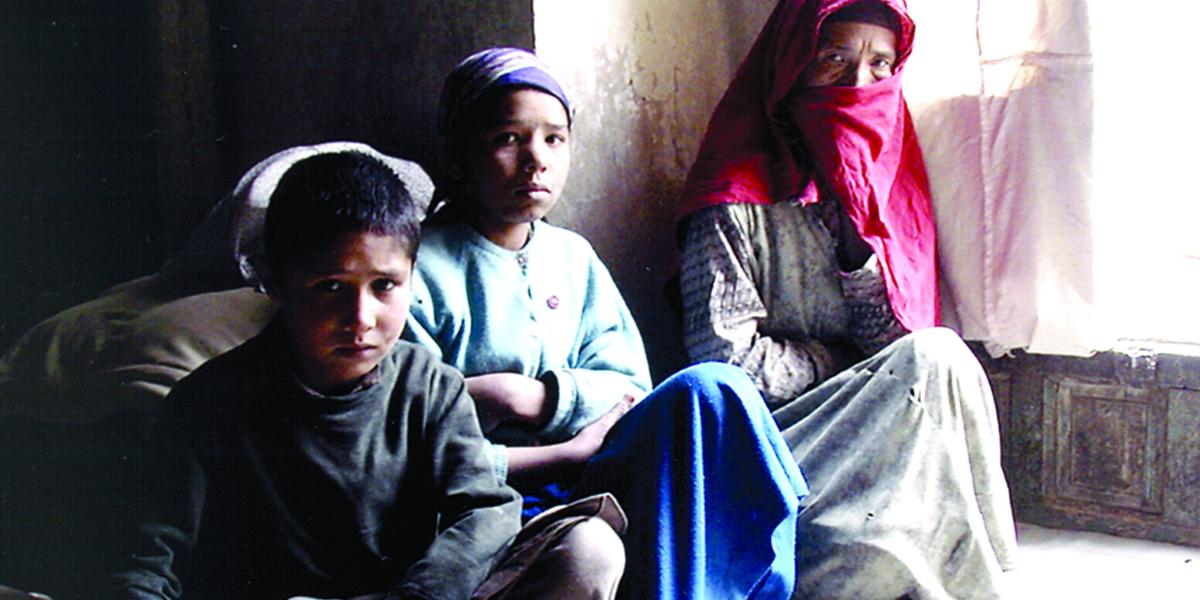Postwar Health in Iraq and Afghanistan
The ping of an AK-47 round hitting an armored Humvee sounds like gravel pelting a car’s undercarriage, according to Frederick “Skip” Burkle, MD, MPH. Burkle learned this obscure fact firsthand, while driving with a U.S. military convoy through the starkly vacant streets of downtown Baghdad late last March.
Burkle, a research scientist at the School of Medicine, and Gilbert Burnham, an associate professor in International Health, were just two of several affiliates of the School’s Center for International Emergency, Disaster, and Refugee Studies (CIEDRS) who took part in humanitarian efforts in Iraq and Afghanistan before, during, and following the armed conflicts there.
Burkle was the senior medical officer of USAID’s Disaster Assistance Response Team (DART). He and his five-member group—which included Eric Noji, MD, MPH ’87, a former School faculty member and a leading epidemiologist and bio-terrorism expert with the Centers for Disease Control and Prevention—arrived in Kuwait on March 17, three days before American-led forces launched the first series of air strikes on Baghdad. DART’s charge was to address the emergency and reconstruction needs of the Iraqi people. With around-the-clock military escort, DART personnel zigzagged across the ravaged country to mitigate outbreaks of infectious diseases, monitor the impact of land mines and unexploded ordnance, and assess the status of water supplies, sanitation, nutrition, and the capability and degree of damage to healthcare facilities.
When not hunkered down in a bomb shelter or being shot at during their two-month mission, Burkle and colleagues secured emergency funding for a looted Basrah hospital laboratory and worked to control a small cholera outbreak in the southern portion of the country.
Presently, the biggest health issue is the lack of security, which impedes access to primary care. “In terms of health care facilities, in many cases either physicians and nurses can’t get there, or patients are afraid to stay,” he says. “On top of that, medical equipment has been looted and will likely continue to be until sufficient order has been restored.”
In Afghanistan, Gilbert Burnham, MD, PhD, and Hopkins colleagues Ayan Ahmed, MD, MPH ’03, and Anbarasi Edward, PhD, MPH ’96, worked with the Baltimore-based, nongovernmental organization World Relief to assess the health problems in two of the nation’s most populated districts.
Burnham, co-director of CIEDRS, and his group helped design and conduct a survey of immunization coverage in the two areas, and worked with Hamid Karzai’s provisional government on long-term planning of health care activities.
In the survey of 600 households, the researchers found that fewer than half kept immunization records for their children and that less than 10 percent of children under age 5 were fully immunized. Afghanistan has the highest maternal mortality rate in the world, Burnham notes. And, perhaps equally alarming, there are an estimated 5 million land mines in agricultural areas; only 2 percent of women have ever been to school; and nearly the entire population suffers from a lack of access to basic health services.
“The nearest clinic for many could be 7 to 8 hours away on horseback or donkey-back,” he says. “In all, it’s a pretty grim life.”
Burnham, who is currently working with two nongovernmental organizations close to Kabul, says that rebuilding Afghanistan’s health system will take years. “Right now there are only emergency funds available, far from enough to be building new schools, clinics, hospitals, and other community resources,” he says. “We’re talking 10 to 15 years before there are adequate health services available to the population.”
